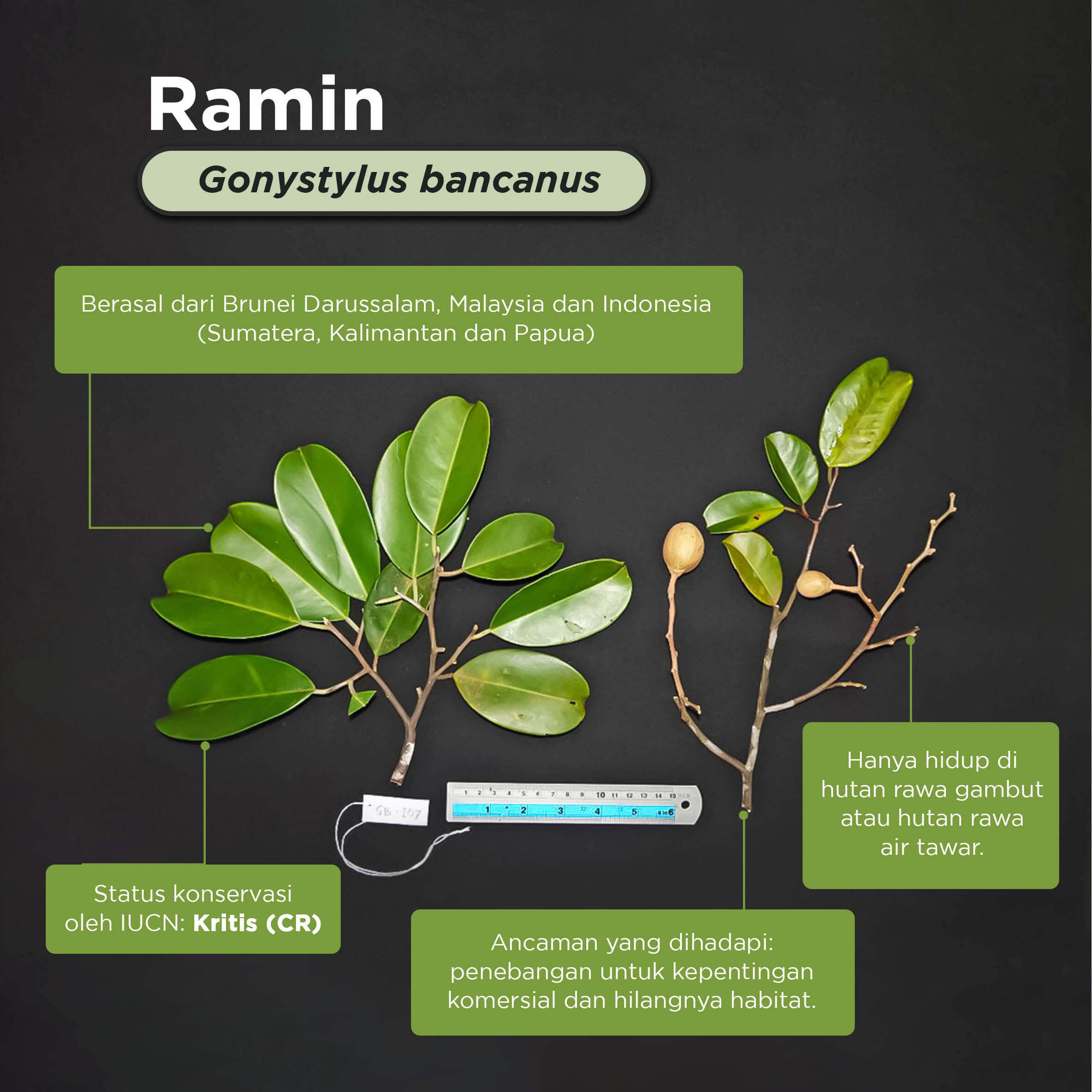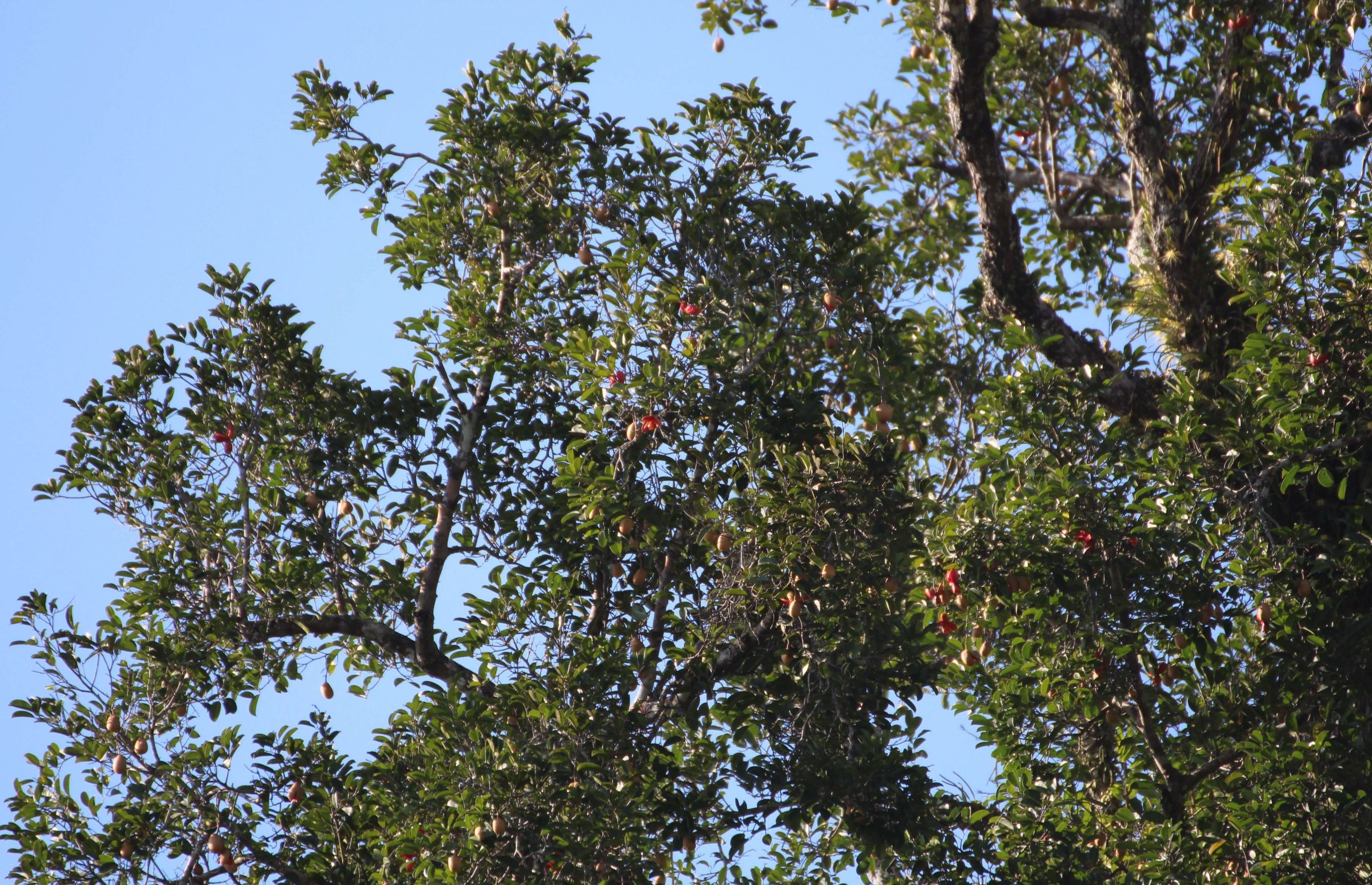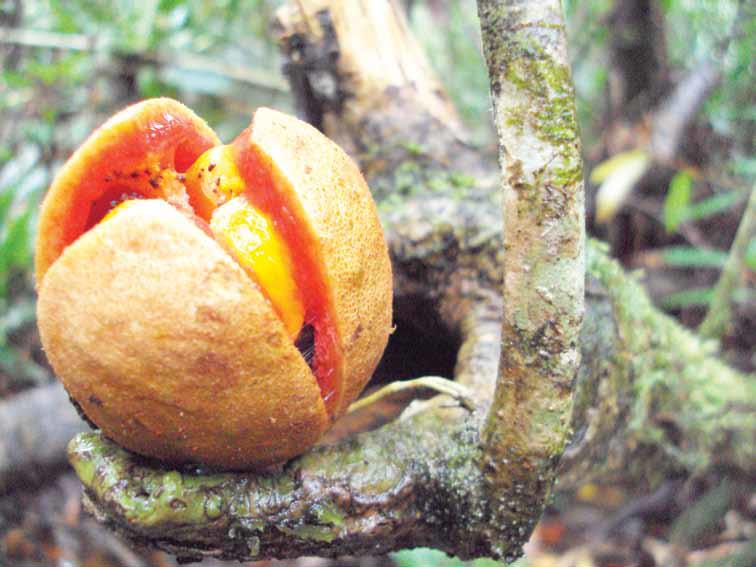February 24, 2023
Gonystylus bancanus, more commonly known as the ramin tree in Indonesia, is an indigenous species in Indonesia and Malaysia that serves as a habitat for many different kinds of animals. However, overexploitation for commercial interests, deforestation, habitat degradation, and forest conversion endanger ramin, and the surviving population in its native environment is now very dispersed.

According to the International Union for Conservation of Nature (IUCN), ramin is listed as Critically Endangered (CR).
What has led this tree population to be classified as critically endangered? What kind of conservation work is being carried out? Let’s find out.
Ramin tree characteristics
The ideal growth conditions for ramin are lowland, swamp, or a combination of peat and swamp environments like in Restorasi Ekosistem Riau (RER). You may find ramin among the flora of Central Kalimantan and West Sumatra, both of which are rich in endemic plant species. Ramin may also be found in the coastal swamps of Malaysia and Brunei Darussalam.
Ramin’s stem is spherical and can grow to a height of 40–45 meters. An adult’s lower trunk has a diameter of 60 to 120 centimeters at breast level. Large, protruding roots are a common trait of ramin plants.
Flowers and fruits of the ramin tree do not bloom and ripen at the same times each year due to the irregular nature of ramin’s blooming and fruiting seasons. The blossoming time of this tree varies depending on where it is planted.
For example, ramin trees in West Kalimantan’s woods bloom between the months of August and October, whereas those in Central Kalimantan’s forests do so in the spring, between the months of April and May. For the last eight years, no ramin trees in Kapuas, Kotawaringin, or Indragiri Hilir have bloomed.

On the Kampar Peninsula, ramin trees at RER typically bloom every two years. Flowers are typically blooming in February, with fruit appearing in May and June. However, according to the RER team’s observations, the ramin tree has not blossomed in four years.
This is entirely typical since ramin trees are ‘masting’ species, which means that most plants do not generate yearly seed crops on a consistent basis, but instead alternate between years with bumper seed harvests and years with poor seed output. Surprisingly, these big harvests occur concurrently in plants that coexist.
What is ramin used for?
Originating from the Thymelaeaceae family, the genus Gonystylus comprises over 30 species that ranges throughout most of the Malesia region. G. bancanus or Ramin become the main species in trade as it is valued for its comparatively soft, easily worked yellowish wood, making it a versatile wood used for picture frames, but also for flooring, plywood, mouldings, dowels, handles, turnery, carving, even boat.
One genus, Funifera, is named after the Latin word for “carrier” (provider) of rope because its inner bark produces a strong fiber that may be used to make cordage and paper. Paper is also made from the bark of trees such the Daphne, Edgeworthia, Rhamnoneuron, Thymelaea, Stellera, and Wikstroemia, while the appealing look of the inner bark of Lagetta species, which are known as lacebark, has led to their usage in the creation of garments and other practical products.
State of conservation and ongoing initiatives
Ramin’s good quality results in a high demand for the wood, thus it has been shipped throughout all of Southeast Asia and exported to places like Italy, the United States, Taiwan, Japan, China, and England.
However, there is a price to be paid for this popularity. In 2001, Indonesia requested the help of its fellow CITES parties in regulating unlawful shipments by including ramin in Appendix III of CITES.
In RER, necessary security measures have been implemented, which include setting up a formal guard and patrol role and developing tailored community resource management and protection plans. RER also collaborates with community organizations on the ground to develop solutions that are both workable and efficient.

The RER team is also planting new ramin trees using its seeds that we plant in our native nursery.
There are seven nurseries on the Kampar Peninsula and Padang Islands where over 60 different tree species are being nurtured, including seedlings of the ramin tree. The stock of nurseries originates from the natural forest that is immediately around them in three different ways: seedlings that have been accidentally uprooted, seeds that have accidentally fallen from forest trees, and cuttings that have been removed from older trees in a cautious and chosen manner.
Usually, it takes 12-18 months for a seedling to mature in a nursery to the point where it is considered “ready-to-plant.” This is because the nursery is where the seedlings spend their first year developing strong roots, stems, and leaves.
Nursery staff are constantly collecting new seedlings since some of them inevitably die from transfer shock, damaged roots, pests, or diseases.
As stated by RER Ecologist, Muhammad Iqbal, “protecting a forest means protecting every tree in it. Cease the illegal felling of trees, extinguishing of forests, and encroachment on wilderness areas. Patrolling the area is one preventative measure that may be used. We also set up guard posts to keep an eye on who was entering and leaving RER. In addition, we collect seeds and saplings from wild ramin trees to replant in our native nursery as part of our enrichment efforts.”